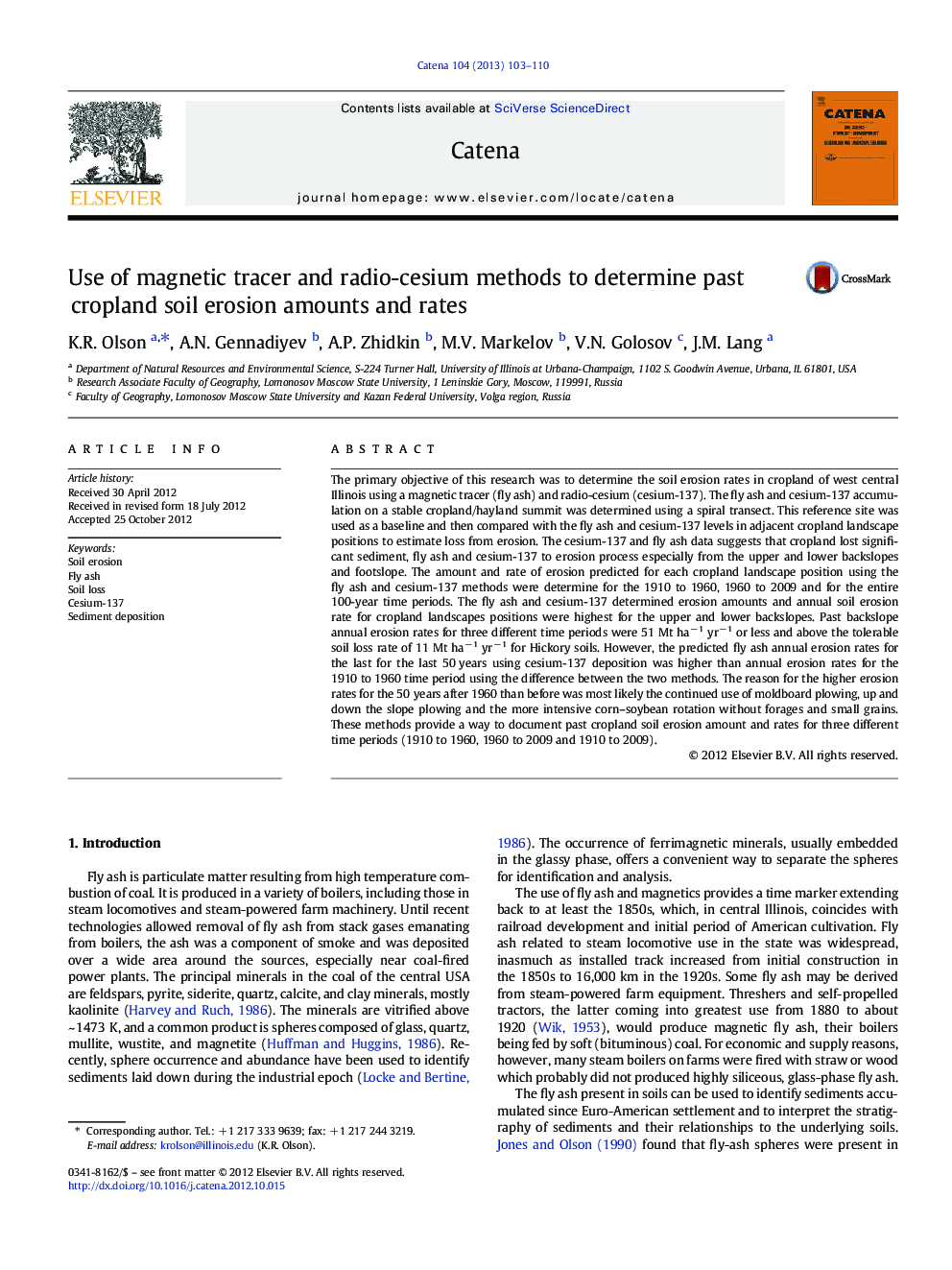| Article ID | Journal | Published Year | Pages | File Type |
|---|---|---|---|---|
| 4571677 | CATENA | 2013 | 8 Pages |
The primary objective of this research was to determine the soil erosion rates in cropland of west central Illinois using a magnetic tracer (fly ash) and radio-cesium (cesium-137). The fly ash and cesium-137 accumulation on a stable cropland/hayland summit was determined using a spiral transect. This reference site was used as a baseline and then compared with the fly ash and cesium-137 levels in adjacent cropland landscape positions to estimate loss from erosion. The cesium-137 and fly ash data suggests that cropland lost significant sediment, fly ash and cesium-137 to erosion process especially from the upper and lower backslopes and footslope. The amount and rate of erosion predicted for each cropland landscape position using the fly ash and cesium-137 methods were determine for the 1910 to 1960, 1960 to 2009 and for the entire 100-year time periods. The fly ash and cesium-137 determined erosion amounts and annual soil erosion rate for cropland landscapes positions were highest for the upper and lower backslopes. Past backslope annual erosion rates for three different time periods were 51 Mt ha− 1 yr− 1 or less and above the tolerable soil loss rate of 11 Mt ha− 1 yr− 1 for Hickory soils. However, the predicted fly ash annual erosion rates for the last for the last 50 years using cesium-137 deposition was higher than annual erosion rates for the 1910 to 1960 time period using the difference between the two methods. The reason for the higher erosion rates for the 50 years after 1960 than before was most likely the continued use of moldboard plowing, up and down the slope plowing and the more intensive corn–soybean rotation without forages and small grains. These methods provide a way to document past cropland soil erosion amount and rates for three different time periods (1910 to 1960, 1960 to 2009 and 1910 to 2009).
► Past soil erosion rates were measured using a cesium-137 and fly ash methods. ► The fly ash and cesium-137 levels on a stable cropland summit were determined. ► This reference site was used as a baseline and then compared with cropland. ► The highest predicted cropland erosion rates were on the backslope. ► The erosion rates were above the tolerable soil loss rate for Hickory soils.
